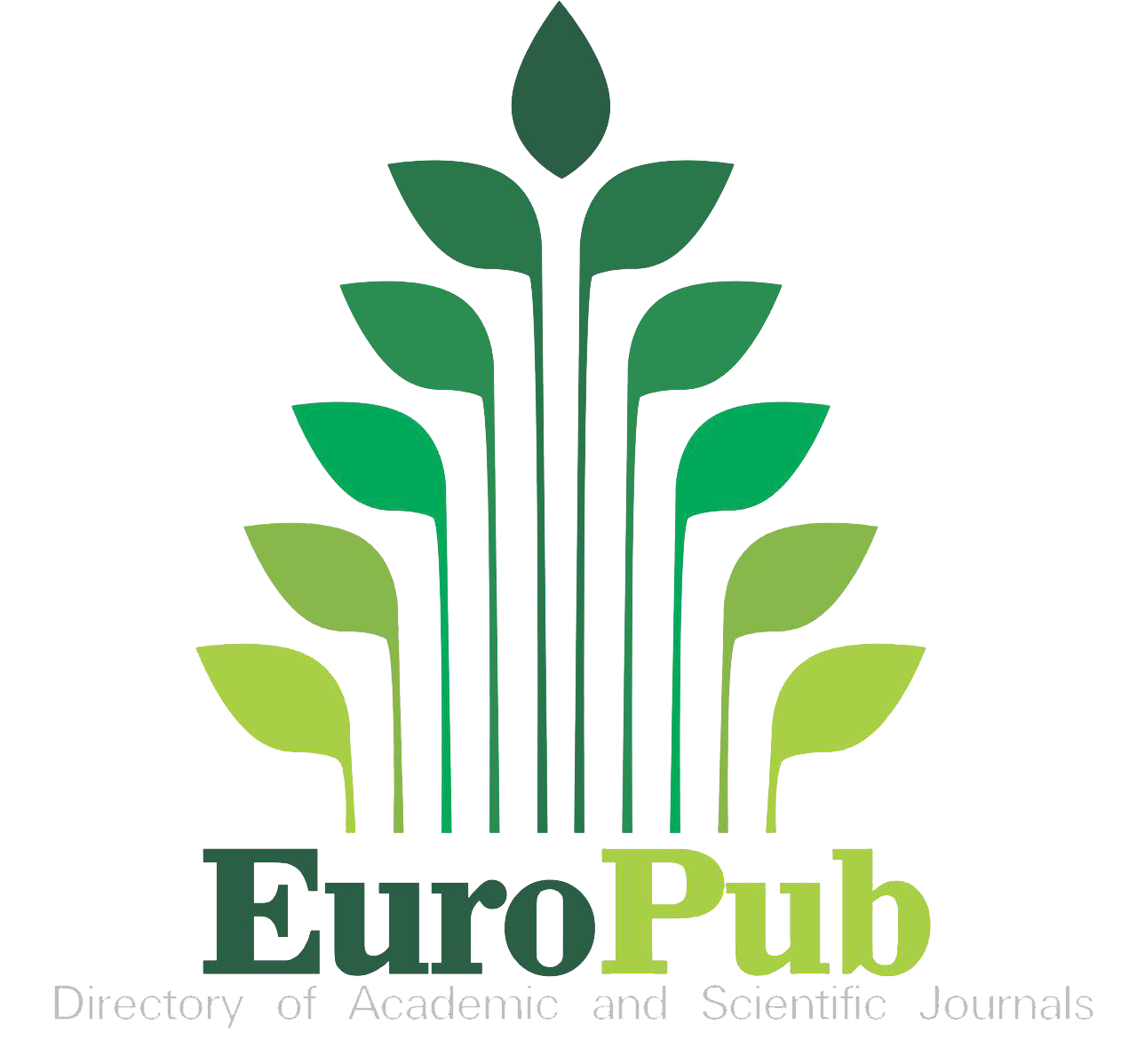Investigating The Impact of Perovskite Layer Thickness Variation on The Performance of Perovskite Solar Cells
Keywords:
Solar cells, Perovskite, Energy, Irradiation, SCAPSAbstract
The present risk of the depletion of the non-renewable sources of energy at an alarming rate has encouraged man to lookup for new ways to produce power and move towards "Renewable Energy Resources". One major source of energy is the heat and intensity from the Sunlight using the Perovskite Solar Cells. This technology has captured extensive attention worldwide in previous few years due to its high efficiency, fast development, low-cost and easy manufacturing process. In this research, the thickness variation of different types of perovskite layers and their impacts on the functioning of the perovskite solar cells have been explored using SCAPS software. The absorption coefficient of semiconducting material is exponentially related to the thickness, so if absorption coefficient is high, lesser thickness can absorb more light. But to avoid the excessive resistance and to lessen the production cost, the thickness should be in the range of the depletion region width. Much smaller thickness yields weak static electric fields in the depletion region. The designs of different perovskite solar cell structures will be simulated and their effects will be critically analyzed in order to have detailed study.
References
F. Guo, Z. Xiao, and J. Huang, “Fullerene Photodetectors with a Linear Dynamic Range of 90 dB Enabled by a Cross-Linkable Buffer Layer,” Adv. Opt. Mater., vol. 1, no. 4, pp. 289–294, Apr. 2013, doi: 10.1002/ADOM.201200071;PAGE:STRING:ARTICLE/CHAPTER.
G. Xing et al., “Long-range balanced electron-and hole-transport lengths in organic-inorganic CH3NH3PbI3,” Science (80-. )., vol. 342, no. 6156, pp. 344–347, Oct. 2013, doi: 10.1126/SCIENCE.1243167/SUPPL_FILE/XING.SM.PDF.
S. D. Stranks et al., “Electron-hole diffusion lengths exceeding 1 micrometer in an organometal trihalide perovskite absorber,” Science (80-. )., vol. 342, no. 6156, pp. 341–344, Oct. 2013, doi: 10.1126/SCIENCE.1243982/SUPPL_FILE/STRANKS-SM.PDF.
W. Nie et al., “High-efficiency solution-processed perovskite solar cells with millimeter-scale grains,” Science (80-. )., vol. 347, no. 6221, pp. 522–525, Jan. 2015, doi: 10.1126/SCIENCE.AAA0472/SUPPL_FILE/NIE.SM.PDF.
Q. Dong et al., “Electron-hole diffusion lengths > 175 μm in solution-grown CH3NH3PbI3 single crystals,” Science (80-. )., vol. 347, no. 6225, pp. 967–970, Feb. 2015, doi: 10.1126/SCIENCE.AAA5760/SUPPL_FILE/PAPV2.PDF.
M. M. Tavakoli et al., “Highly Efficient Flexible Perovskite Solar Cells with Antireflection and Self-Cleaning Nanostructures,” ACS Nano, vol. 9, no. 10, pp. 10287–10295, Aug. 2015, doi: 10.1021/ACSNANO.5B04284/SUPPL_FILE/NN5B04284_SI_001.PDF.
W. Zhang, G. E. Eperon, and H. J. Snaith, “Metal halide perovskites for energy applications,” Nat. Energy, vol. 1, no. 6, pp. 1–8, May 2016, doi: 10.1038/NENERGY.2016.48;SUBJMETA=1130,2798,299,301,4077,639,766;KWRD=ELECTRONIC+AND+SPINTRONIC+DEVICES,ENERGY+SCIENCE+AND+TECHNOLOGY,MATERIALS+FOR+ENERGY+AND+CATALYSIS.
A. Husainat, W. Ali, P. Cofie, J. Attia, and J. Fuller, “Simulation and Analysis of Methylammonium Lead Iodide (CH<sub>3</sub>NH<sub>3</sub>PbI<sub>3</sub>) Perovskite Solar Cell with Au Contact Using SCAPS 1D Simulator,” Am. J. Opt. Photonics, vol. 7, no. 2, p. 33, 2019, doi: 10.11648/J.AJOP.20190702.12.
Q. Chen et al., “Under the spotlight: The organic–inorganic hybrid halide perovskite for optoelectronic applications,” Nano Today, vol. 10, no. 3, pp. 355–396, Jun. 2015, doi: 10.1016/J.NANTOD.2015.04.009.
M. S. Islam et al., “Defect Study and Modelling of SnX3-Based Perovskite Solar Cells with SCAPS-1D,” Nanomater. 2021, Vol. 11, Page 1218, vol. 11, no. 5, p. 1218, May 2021, doi: 10.3390/NANO11051218.
Y. Raoui, H. Ez-Zahraouy, N. Tahiri, O. El Bounagui, S. Ahmad, and S. Kazim, “Performance analysis of MAPbI3 based perovskite solar cells employing diverse charge selective contacts: Simulation study,” Sol. Energy, vol. 193, pp. 948–955, Nov. 2019, doi: 10.1016/J.SOLENER.2019.10.009.
L. Ocaña, C. Montes, S. González-Pérez, B. González-Díaz, and E. Llarena, “Characterization of a New Low Temperature Encapsulation Method with Ethylene-Vinyl Acetate under UV Irradiation for Perovskite Solar Cells,” Appl. Sci. 2022, Vol. 12, Page 5228, vol. 12, no. 10, p. 5228, May 2022, doi: 10.3390/APP12105228.
S. Tao et al., “Absolute energy level positions in tin- and lead-based halide perovskites,” Nat. Commun. 2019 101, vol. 10, no. 1, pp. 1–10, Jun. 2019, doi: 10.1038/s41467-019-10468-7.
M. Caputo et al., “Electronic structure of MAPbI3 and MAPbCl3: importance of band alignment,” Sci. Rep., vol. 9, no. 1, pp. 1–11, Dec. 2019, doi: 10.1038/S41598-019-50108-0;SUBJMETA=1005,119,299,301,639,766,995;KWRD=CONDENSED-MATTER+PHYSICS,ELECTRONIC+PROPERTIES+AND+MATERIALS,MATERIALS+FOR+DEVICES,MATERIALS+FOR+ENERGY+AND+CATALYSIS.
N. G. Park, M. Grätzel, and T. Miyasaka, “Organic-inorganic halide perovskite photovoltaics: From fundamentals to device architectures,” Org. Halide Perovskite Photovoltaics From Fundam. to Device Archit., pp. 1–366, Jan. 2016, doi: 10.1007/978-3-319-35114-8/COVER.
S. A. Veldhuis et al., “Perovskite Materials for Light-Emitting Diodes and Lasers,” Adv. Mater., vol. 28, no. 32, pp. 6804–6834, Aug. 2016, doi: 10.1002/ADMA.201600669;REQUESTEDJOURNAL:JOURNAL:15214095;WGROUP:STRING:PUBLICATION.
M. Saliba et al., “Cesium-containing triple cation perovskite solar cells: improved stability, reproducibility and high efficiency,” Energy Environ. Sci., vol. 9, no. 6, pp. 1989–1997, Jun. 2016, doi: 10.1039/C5EE03874J.
“Best Research-Cell Efficiency Chart | Photovoltaic Research | NREL.” Accessed: Jun. 14, 2025. [Online]. Available: https://www.nrel.gov/pv/cell-efficiency
Q. Lin, A. Armin, P. L. Burn, and P. Meredith, “Organohalide Perovskites for Solar Energy Conversion,” Acc. Chem. Res., vol. 49, no. 3, pp. 545–553, Mar. 2016, doi: 10.1021/ACS.ACCOUNTS.5B00483/ASSET/IMAGES/MEDIUM/AR-2015-00483Y_0004.GIF.
D. A. Egger, A. M. Rappe, and L. Kronik, “Hybrid Organic-Inorganic Perovskites on the Move,” Acc. Chem. Res., vol. 49, no. 3, pp. 573–581, Mar. 2016, doi: 10.1021/ACS.ACCOUNTS.5B00540/ASSET/IMAGES/LARGE/AR-2015-00540X_0003.JPEG.
M. C. Weidman, M. Seitz, S. D. Stranks, and W. A. Tisdale, “Highly Tunable Colloidal Perovskite Nanoplatelets through Variable Cation, Metal, and Halide Composition,” ACS Nano, vol. 10, no. 8, pp. 7830–7839, Aug. 2016, doi: 10.1021/ACSNANO.6B03496/SUPPL_FILE/NN6B03496_SI_002.MPG.
G. Schileo and G. Grancini, “Lead or no lead? Availability, toxicity, sustainability and environmental impact of lead-free perovskite solar cells,” J. Mater. Chem. C, vol. 9, no. 1, pp. 67–76, Jan. 2021, doi: 10.1039/D0TC04552G.
B. Bin Yu et al., “High-efficiency tin perovskite solar cells by the dual functions of reduced voltage loss and crystal regulation,” Mater. Des., vol. 228, p. 111850, Apr. 2023, doi: 10.1016/J.MATDES.2023.111850.
“Short-Circuit Current | PVEducation.” Accessed: Jun. 14, 2025. [Online]. Available: https://www.pveducation.org/pvcdrom/solar-cell-operation/short-circuit-current
“Solar Cell Parameters equivalent - 9 Solar Cell Parameters and Equivalent Circuit 9 External solar - Studocu.” Accessed: Jun. 14, 2025. [Online]. Available: https://www.studocu.com/row/document/institute-of-technology-of-cambodia/solar-energy/solar-cell-parameters-equivalent/80590398
X. Liu et al., “Templated growth of FASnI3 crystals for efficient tin perovskite solar cells,” Energy Environ. Sci., vol. 13, no. 9, pp. 2896–2902, Sep. 2020, doi: 10.1039/D0EE01845G.
Z. Zhang, J. Liu, H. Bi, L. Wang, Q. Shen, and S. Hayase, “Over 14% efficiency of highly reproducible Sn perovskite solar cell via defect passivation and morphology repairment,” Chem. Eng. J., vol. 483, p. 149345, Mar. 2024, doi: 10.1016/J.CEJ.2024.149345.
F. Hao, C. C. Stoumpos, D. H. Cao, R. P. H. Chang, and M. G. Kanatzidis, “Lead-free solid-state organic–inorganic halide perovskite solar cells,” Nat. Photonics 2014 86, vol. 8, no. 6, pp. 489–494, May 2014, doi: 10.1038/nphoton.2014.82.

Downloads
Published
How to Cite
Issue
Section
License
Copyright (c) 2025 50sea

This work is licensed under a Creative Commons Attribution 4.0 International License.




















